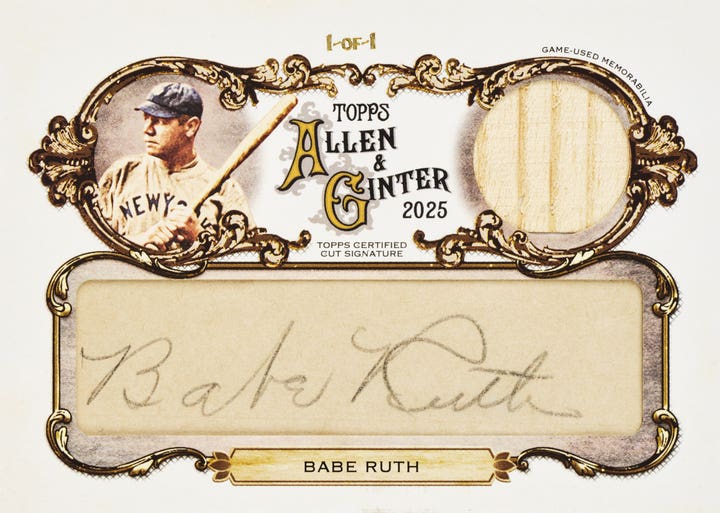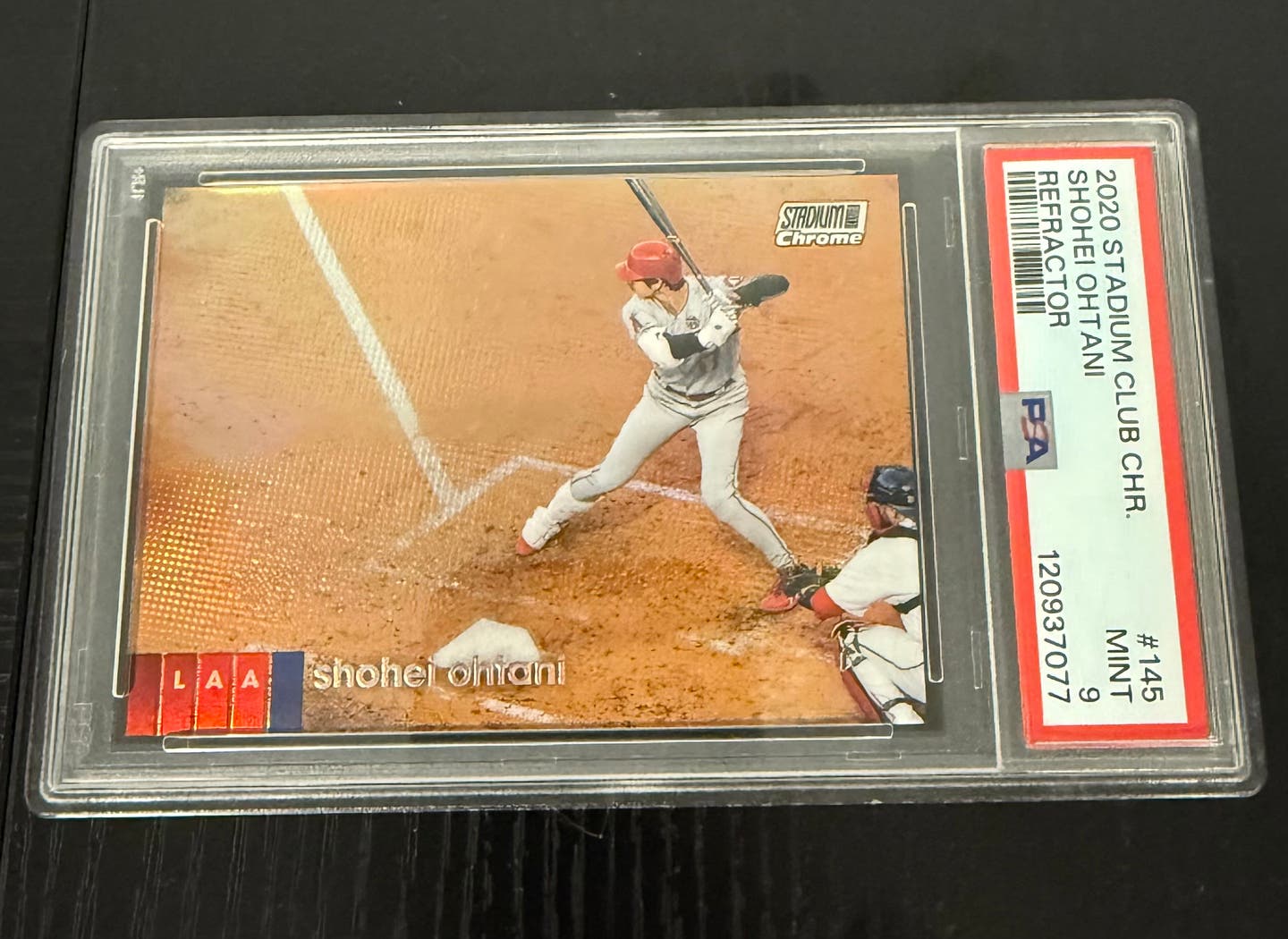Collecting 101
Operation Bullpen’s FBI undercover agent and collector John Ferreira provides tips on how to avoid fake autographs
By Kevin Nelson
The world of collecting attracts all kinds of people, from all walks of life. But among this vast, diverse group, there is no collector with a resumé that can match John Ferreira’s.
Ferreira is an expert collector and advisor, twice the owner of a card and memorabilia shop, the bosom buddy of a Hall of Fame legend, an esteemed FBI agent, now retired, and perhaps most compelling to collectors, the man who served as undercover agent in the FBI’s Operation Bullpen investigations in the late 1990s that brought down the biggest and most notorious forgery ring in autograph history.
Ferreira popped back into the limelight recently with his appearance in ESPN’s 30 for 30 film, “The Counterfeiter,” which debuted on the network in May. The documentary film also includes interviews with Greg Marino, the chief forger in the Bullpen ring, and Ferreira’s friend and former colleague in the FBI, Tim Fitzsimmons, who oversaw the Bullpen investigation and busts and remains a leading fraud investigator.
Unlike Fitzsimmons though, Ferreira is a true, bred-in-the bone collector; he loves it, it’s a passion of his. He has been collecting cards and autographs all his life and although he has cut back considerably from his peak trading days, he still goes on eBay regularly and buys and sells things. He recently paid $700 for a player’s contract signed by old-time American League president Ban Johnson, who died in 1931.
Ferreira had been pursuing Johnson’s signature to fill a gap in his collection.
Because of his unusual skill set—proven expert at finding good autographs and combating bad ones—Ferreira receives frequent calls and emails from other collectors seeking advice, including big-name collectors as well as other retired FBI agents who have taken up the hobby.
“I hear and see all the problems,” he said in a recent phone interview from Hawaii amidst preparations for his daughter’s wedding this summer.
Those problems are in many ways the same ones he encountered in 1997 when he began his assignment of working undercover for the FBI with the goal of penetrating the inner circle of the Bullpen forgery ring.
“The problems haven’t gone away,” he said. “They will never go away.”
The problems, of course, revolve around the ease in which forgers, working alone at home, can produce fake autographs and sell them online, although in a hopeful note, Ferreira thinks things have gotten better, much better, than in the bad old days of the 1990s and 2000s.
“It’s a lot better than it was in the ’90s. Has it gone away completely? No, but it’s a lot better,” he said.
Why is it better? Because of the investigation that Ferreira and Fitzsimmons worked on, along with all the coverage in Sports Collectors Digest and other media about it over the years. Since then, eBay, the major trading platform for collectors, has “cracked down” on frauds, Ferreira said. Also helping to curb the problem is the rise of third-party authenticators such as JSA and PSA/DNA. Although not without flaws, these services sprang up as part of the industry’s effort to clean up its reputation following the landslide of fakes being produced by the Bullpen gang that threatened to overwhelm the hobby.
At the time law enforcement estimates of the number of counterfeits in the marketplace ranged as high as 90 percent, although many in the industry disputed this figure.
Today, Ferreira sets the percentage at perhaps half; this includes the polluted celebrity autograph market, which is famously less interested in authentication efforts than on the sports side.
But the biggest reason why collectors are better off today than they were 20 years ago is collectors themselves.
“People are a lot smarter today,” Ferreira said. “They’re aware, they’re more educated. They’ve heard all the stories about Bullpen. People are being more cautious.”
Collectors by and large have gotten hip to a lot of things that fooled them back in Bullpen days, such as COAs. Marino and Co. manufactured their own COAs to trick their buyers into thinking the signatures they were selling were authentic. Alas, these paper certs were as corrupt as the sigs.
These days most collectors realize that a COA issued by the seller and brandished by the buyer as proof of authenticity means “nothing,” in Ferreira’s words.
Even so, there are still plenty of reasons for collectors to be cautious in today’s marketplace, especially if you’re attempting to buy a legendary superstar of the past who is no longer with us, e.g., Mickey Mantle, Joe DiMaggio, and Ted Williams. The Big Three were the stock in trade of Marino, who learned his craft by mastering the half moon shapes that characterize the beautifully rendered signature of Mantle in his signing prime. All that bad, beautiful stuff that came swirling off Marino’s pen is still out there, warned Ferreira.
One can breathe a little easier if you’re dealing with a notable of somewhat lesser renown such as Hall of Fame Red Sox second-baseman Bobby Doerr, a close friend of Ferreira’s. Doerr, who’s 99 and lives in Oregon, still signs for people and is happy to do it. For many years he and Ferreira went to lunch every week and the retired agent still advises Doerr, who himself acquired a treasury of rare stuff when he was on the Sox, on memorabilia matters.
A Doerr signature on eBay may sell for only five bucks, largely because there are so many of them out there. Although nothing is certain in this world, least of all in the world of collecting, there’s a high probability that if you run across a Doerr sig on eBay, it’s legit. Because it takes a long time to learn how to trick people, forgers tend to stick to the superstar names for the obvious reason that they will earn them more loot.
When he was living in Oregon and going to lunch with Doerr, Ferreira owned a card shop in Eugene after calling it quits with the FBI. He sold the shop after four years, took it back after a hiatus, then sold it for again two years later in 2012. Ferreira is now permanently out of the card shop business. But his experience in retail is yet another reason why his opinions on autographs and collecting are so sought after, and respected.
A few more tips from him to collectors:
• Get a money-back guarantee. “Always get a guarantee. If the sig comes back bad, you want your money back from the guy you bought it from.”
• “Check the seller out.” Is the person you’re buying from a trustworthy businessperson? This was a point stressed by Tim Fitzsimmons, too, in his recent interview with SCD. “A good forgery properly priced will fool the unquestioning,” Fitzsimmons said. “A buyer has to check out the chain of custody as well as the seller.”
• On that note, Ferreira said, “Do your homework. Ask questions when you buy. Collecting is a good hobby but be educated. Be cautious.”
And, one might add, do not expect a lot of help from law enforcement if someone sticks you with a phony Abe Lincoln or Marilyn Monroe autograph. With forgery, typically the criminal activity must exceed a dollar loss threshold for the local police or FBI to get interested. For instance, according to Ferreira, in some big cities the estimated loss threshold must exceed $1 million, whereas in other cities it might be $100,000. These thresholds vary according to the jurisdiction; still, the point is clear: Unless you’ve been ripped off in a major way, the law enforcement response to your complaint may be a big yawn.
But, said Ferreira, be sure to report the crime to the police or FBI anyhow. At the FBI every complaint goes into a file; the complaints are indexed; names are kept; records stored. If enough complaints arise about a person or organization, the dollars being ripped off could reach that magic threshold, and excite the interest of the law.
“Then,” said Ferreira, speaking as a man who truly knows, “you’ve got something they’ll go after.”
Kevin Nelson is the author of Operation Bullpen: The Inside Story of the Biggest Forgery Scam in American History. His most recent articles for Sports Collectors Digest were interviews with Tim Fitzsimmons and Brian Biegel, director of “The Counterfeiter.”








